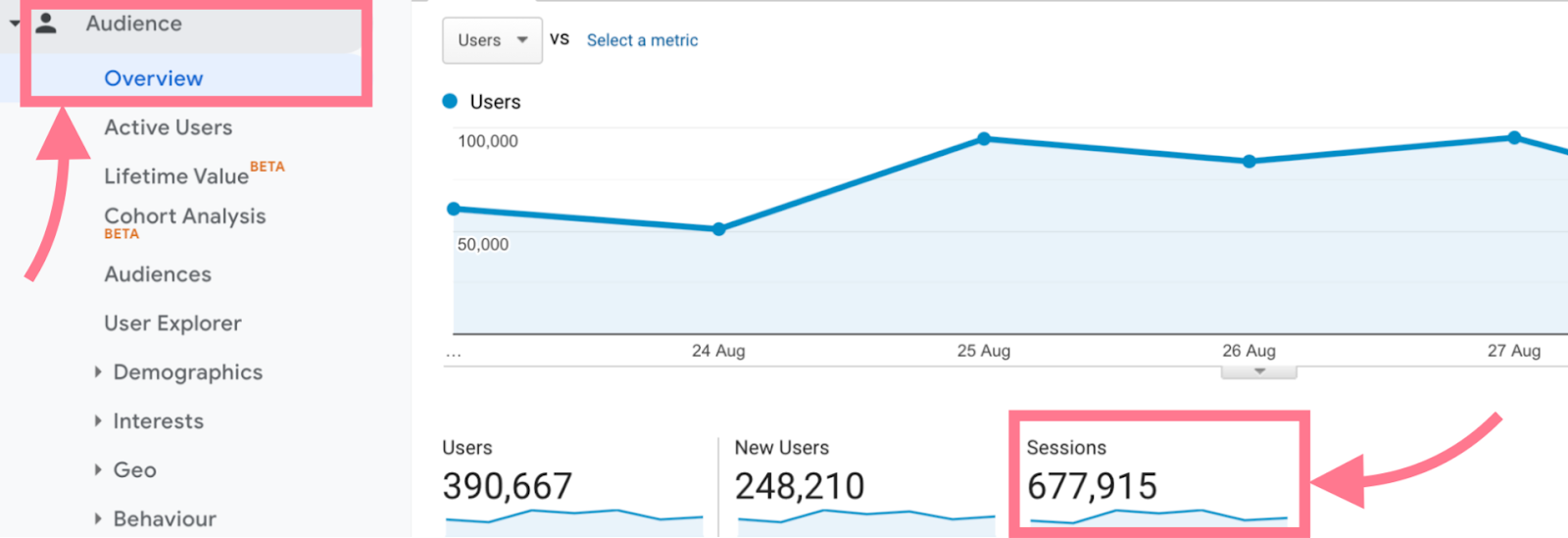When Does the Google Analytics Tracking Code Send an Event Hit to Analytics? A Deep Dive into User Interactions
When Does the Google Analytics Tracking Code Send an Event Hit to Analytics? A Deep Dive into User Interactions
Blog Article
Master Website Insights With Accurate Google Analytics Monitoring Code
The efficient utilization of Google Analytics rests on the precise application of its tracking code, a basic step typically ignored by site owners. This apparently straightforward JavaScript snippet, when appropriately put, comes to be the foundation of information collection, providing insights right into customer habits and website efficiency. However, challenges can develop throughout setup, possibly skewing the information and leading to misinformed choices. Understanding these ins and outs is important for making best use of the advantages of analytics. What are the usual challenges that could weaken your monitoring initiatives, and exactly how can you ensure precision in your approach?
Comprehending Google Analytics Essentials
Google Analytics is an important tool for website proprietors and marketers, offering invaluable understandings right into customer behavior and web site efficiency. At its core, Google Analytics gathers information about visitors to a site, enabling customers to analyze metrics such as web traffic sources, individual engagement, and conversion rates. Recognizing these principles is essential for enhancing an internet site's efficiency and enhancing customer experience.
The platform uses cookies to track communications, taping data such as page sights, session durations, and bounce prices. This details is aggregated and presented with customizable dashboards, making it possible for individuals to envision trends with time. Secret performance indications (KPIs) can be kept track of, such as the complete number of customers, new versus returning site visitors, and the geographic distribution of the target market.
In Addition, Google Analytics supplies segmentation functions, allowing users to isolate certain website traffic resources or individual demographics for more targeted evaluation. By understanding these fundamental aspects, internet site proprietors can make educated choices about web content strategy, advertising and marketing projects, and total website enhancements. Ultimately, comprehending Google Analytics basics is essential for leveraging information to drive development and accomplish business purposes properly.
Establishing Your Tracking Code

Duplicate the given monitoring code and paste it into the HTML of your website. This makes certain that the tracking code lots prior to any kind of other web content, permitting it to record information accurately.
After installation, validate that the tracking code is working appropriately by utilizing Google Tag Aide or the Real-Time reports in Google Analytics - when does the google analytics tracking code send an event hit to analytics?. This action is important to validate that your data collection is exact and energetic, establishing the structure for insightful analysis
Usual Monitoring Code Issues
This may occur when the monitoring code is positioned in the wrong section of the internet site's HTML, frequently leading to absent or incomplete data. Additionally, having several circumstances of the monitoring code on a single page can result in filled with air metrics, as user communications could be counted extra than once.
An additional issue develops from the usage of advertisement blockers, which can stop the monitoring code from carrying out completely, hence skewing data. when does the google analytics tracking code send an event hit to analytics?. Moreover, failure to set up filters correctly can result in the exemption of essential traffic sources or the incorporation of unwanted referral spam, distorting the information collected
Website owners might likewise overlook the value of tracking basics code updates, particularly when moving to Google Analytics 4 (GA4) from Universal Analytics. Lastly, insufficient testing prior to introducing adjustments can result in unnoticed errors in the tracking code, better complicating data dependability. Attending to these common issues is vital for making certain accurate tracking and insightful analytics.
Studying Site Data Effectively
Accurate information collection is only the initial step in leveraging Google Analytics; the real value exists in properly evaluating that data to drive enlightened decision-making. To achieve this, it is necessary to recognize vital performance signs (KPIs) that straighten with your organization objectives. Emphasis on metrics such as conversion rates, individual involvement, and website traffic resources, as these will give insights into individual habits and the general performance of your site.
Using Google Analytics' division attributes permits a deeper understanding of your audience. By breaking down data right into specific demographics, actions, and traffic networks, you can discover trends and patterns that educate targeted methods. Executing customized reports and dashboards can improve this procedure, enabling fast accessibility to significant information.
Moreover, frequently evaluating information trends in time aids to identify abnormalities and chances for enhancement. Make use of visualization devices to present information in an easily digestible layout, promoting extra reliable communication with stakeholders. Ultimately, the ability to analyze website data successfully empowers services to make tactical decisions that improve user experience, enhance advertising initiatives, and drive development.

Best Practices for Accurate Monitoring
Executing efficient monitoring techniques is important for getting reliable data in Google Analytics. To guarantee exact monitoring, begin by correctly installing the Google Analytics tracking code on every web page of your web site. This can be completed with a tag manager or by directly embedding the code right into the HTML.
Following, configure your Google Analytics account to leave out interior web traffic. This can be done by establishing filters that determine and remove gos to from your company's IP address, thus protecting against skewed data. Furthermore, make use of occasion monitoring to keep an eye on certain customer interactions, such as downloads or video plays, which basic page views might overlook.
Frequently audit your tracking arrangement to verify that all features, such as objectives and ecommerce visit this web-site tracking, are working effectively. Develop a consistent identifying convention for your occasions and campaigns to promote easier reporting and analysis.
Last but not least, think about leveraging UTM parameters for projects to gain understandings into the efficiency of different marketing efforts. By adhering to these best methods, you can enhance the precision of your information collection and evaluation, inevitably resulting in more enlightened decision-making for your web site.
Final Thought
Precise implementation of the Google Analytics tracking code is necessary for grasping website understandings. By ensuring the monitoring code is appropriately put and routinely investigated, web site proprietors can record essential customer communication data, thus promoting the recognition of crucial performance indications. Effective analysis of this information, incorporated with adherence to finest practices, allows educated decision-making and the optimization of on-line strategies. Ultimately, a durable tracking framework enhances the ability to drive interaction and improve overall internet site efficiency.

Inadequate testing prior to releasing changes can result in unseen errors in the tracking code, further making complex information reliability.Executing efficient monitoring practices is vital for getting trustworthy data in Google Analytics. By making certain the monitoring code is appropriately put and check that on a regular basis audited, internet site owners can catch crucial user communication data, therefore promoting the identification of essential performance indications.
Report this page